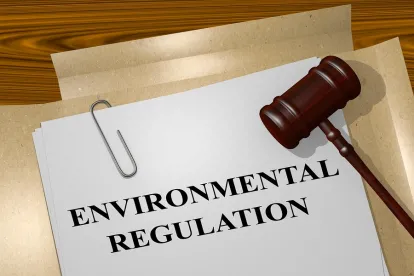Chlorpyrifos
The pesticide program will face an early test of its emphasis and direction, as the program is under a court order to make a final decision about the future of the organophosphate insecticide chlorpyrifos by March 31, 2017, just a few months into the new Trump Administration. Chlorpyrifos is a widely used organophosphate insecticide and has been the target of activist group attention and controversy over many years. Pesticide Action Network North America (PANNA) and the Natural Resources Defense Council (NRDC) filed a petition to revoke the tolerances and cancel the registrations for chlorpyrifos in 2007. When these groups concluded that EPA in their view had not acted sufficiently timely on their petition, they sought a writ of mandamus from the U.S. Circuit Court of Appeals for the Ninth Circuit that would order EPA to act on that petition. After making an initial determination that EPA had a rational basis for delay, the Ninth Circuit ultimately agreed to grant the writ on August 10, 2015. The Court has stated unequivocally that it will not grant any further extension of the March 31, 2017, deadline for final action on the petition.
At the time PANNA and NRDC began the court case, EPA had issued a preliminary decision indicating that it intended to deny the petition, but EPA later reversed course and, in the process, issued several controversial documents upon which it relies in support of its current proposal to revoke the food use tolerances for the pesticide. 80 Fed. Reg. 69079 (Nov. 6, 2015).
EPA’s determinations concerning chlorpyrifos have been controversial, and some of these reach far beyond chlorpyrifos in their potential impact. For example, EPA has issued and relied upon a new determination regarding the interpretation of epidemiological data and how such data are used in making Food Quality Protection Act (FQPA) safety factor decisions. EPA has utilized epidemiological data for chlorpyrifos to select risk endpoints for chlorpyrifos and for all organophosphate pesticides. This FQPA safety factor determination has been the subject of much concern and comment, with industry pointing out numerous scientific, legal, and procedural flaws in the scientific predicate for the determination and the procedure by which it was adopted.
The Trump Administration is not expected to support the chlorpyrifos tolerance revocations as proposed by the Obama Administration. It is unclear at this time, however, how the Trump Administration might change course on the controversial EPA determinations underlying the proposed revocations. The record developed will be the subject of continued legal challenge. Coming so early in the new President’s term will also mean that new OCSPP leadership will not yet be in place. This will increase the difficulty of making a final decision before the court deadline, particularly any decision to reverse course. Adding to the challenge, the court has expressed significant frustration with the pace of EPA’s decision-making; any effort to ask for more time in light of the Administration change would almost certainly meet a chilly reception.
Endangered Species
Another key issue that will beset the program continually in 2017 is implementation of the Endangered Species Act (ESA), an issue that has dogged the program for years. The problems of “how much is enough” and how to conduct an assessment have long been concerns. As the issue of endangered species protection has expanded to include legal challenges to new active ingredient registrations under the Federal Insecticide, Fungicide, and Rodenticide Act (FIFRA), the issues have become even more heated.
In recent years, NGO groups filed challenges in both federal district court and federal appellate court to EPA’s registration of new pesticide products with new active ingredients. These challenges are of concern for many reasons, but perhaps most importantly because they were filed to object to a new pesticide active ingredient. New active ingredients typically have been seen as less likely to have an adverse environmental impact, and less likely to jeopardize endangered or threatened species, than the incumbent products they replace. In some cases, EPA has relied on this reasoning explicitly as the rationale for its claim of ESA compliance. If the pending challenges result in long delays or require an administrative record that creates evidentiary impediments to the new pesticide approval process, this could become the “train wreck” some have predicted for years. If so, that could force Congress to create a more workable process for how ESA and FIFRA should interact.
Some of the legal challenges to new active ingredients should be decided soon. If these decisions impose new evidentiary burdens, it is possible that ESA litigation could threaten to undermine the entire current pesticide regulatory system. EPA and the Services (the U.S. Fish and Wildlife Service and the National Marine Fisheries Service) have made recent efforts to improve and more closely coordinate ESA review procedures, and have issued the first biological evaluations under the “improved” assessment approach. This new approach may still be unsustainable and impractical and involve too great a commitment of time and resources, however. With a Republican President and Congress, there may be renewed interest in making legislative changes to create a more practical approach to evaluating impacts on endangered species as part of the pesticide registration process.
Pollinators
Under the Obama Administration, OPP actions regarding the pollinator issue were discharged through directives and announcements that EPA has made in recent years, starting in 2013 when EPA required significant label changes to lessen any impact on pollinators from insecticide use. Then, in June 2014, the White House issued a “Presidential Memorandum -- Creating a Federal Strategy to Promote the Health of Honey Bees and Other Pollinators.” The strategy is directed to all federal agencies and designed to “expand Federal efforts and take new steps to reverse pollinator losses and help restore populations to healthy levels.”
In May 2015, the White House released its “National Strategy to Promote the Health of Honey Bees and Other Pollinators” that led EPA also in May 2015 to publish a “Proposal to Mitigate Exposure to Bees from Acutely Toxic Pesticide Products.” The proposal was designed to target pesticide use by those who use contracted pollinator services, and included a list of 76 pesticides (not only insecticides) to which the new labeling requirements would apply. EPA received comments from many grower groups and state pesticide officials critical of various elements of the proposal, and is still in the process of reviewing comments. EPA was expected to respond to these comments sometime in early 2016, but EPA has yet to release a revised proposal. EPA has stated in various communications that it still expects to respond to the comments submitted with a revised proposal before the end of the Obama Administration. The Trump Administration is expected to review, revise, and/or repeal what will likely be known as the “Obama strategy.”
WPS and Certification and Training
In March 2014, EPA issued a proposed rule to update the WPS that generated a large volume of public comments about various elements of its planned revisions. EPA issued the final rule in September 2015 and it was subsequently published in the Federal Register on November 2, 2015. Although changes to the WPS have been discussed for years, in some cases since the first regulations were issued over 20 years ago, elements of these changes that EPA proposed, as well as preamble language discussing those changes, were controversial. In its most simple form, critics of increasing the stringency of the current regulations ask why significant changes were needed after 20 years of greater protection offered by the existing regulatory requirements. Others, not surprisingly, cite reported (and unreported) incidents as proof for the need nonetheless to improve the extent and effectiveness of the current regulations. EPA’s final rule represented EPA’s attempt to balance these views, although many in the industry and in the states believe EPA’s rule was a great over-reach. One of the most controversial elements in the final rule allows for third party representatives of farmworkers to ask growers to examine records. Issues about the need for and possible intrusiveness of the requirement have remained controversial, and now with a Republican Administration and Congress it is expected that EPA will revise the rule, or else face a legislative directive to eliminate or change the third-party inspection provisions.
The final rule is scheduled to be published on January 4, 2017, with an effective date of March 6, 2017. The proposed rule generated significant controversy and concern from grower groups, registrants, and states who would implement the new requirements. Although EPA has discussed updating these requirements for many years with stakeholder groups, consensus on the types of changes and improvements needed and feasible remains the subject of considerable contention. The proposed rule generated significant controversy and concern from grower groups, registrants, and states who would implement the new requirements. Although EPA has discussed updating these requirements for many years with stakeholder groups, consensus on the types of changes and improvements needed and feasible remains the subject of considerable contention.
Reauthorization of the Pesticide Registration Improvement Act (PRIA)
The Pesticide Registration Improvement Act of 2003 (PRIA) established a fee schedule for pesticide registration- and amendment-related applications, and specified decision time periods in which EPA must make a regulatory decision. PRIA has been reauthorized twice, and currently is scheduled to expire at the end of this federal fiscal year, on September 30, 2017. As was the case for PRIA and its prior reauthorizations, a coalition of registrants, labor, and environmental advocates are working with Congress to pass what will be “PRIA 4” by the end of the fiscal year.
With each reauthorization of PRIA, there have been increases in the number of fee categories based on the ongoing experience with this pay-for-service program, and increases in the fees themselves (typically five percent). There also have been provisions addressing the federal annual maintenance fees, and money set aside to fund specific projects. Similar changes in PRIA 4 reasonably may be expected.
While PRIA reauthorization is unlikely to be high on Congress’ or the new Administration’s list of priorities, we understand that the House and Senate Agriculture and Appropriate Committees recognize that all stakeholders are counting on Congress to pass this legislation, to allow the pesticide program to continue to function and secure certainty for the regulated community.





 />i
/>i

